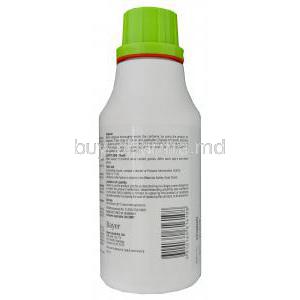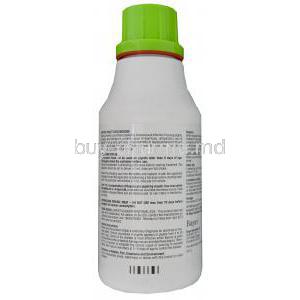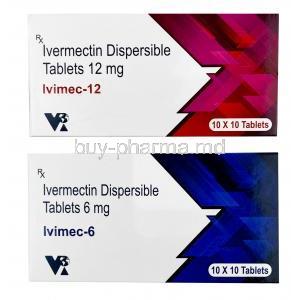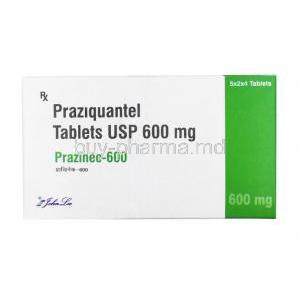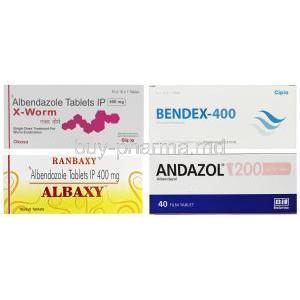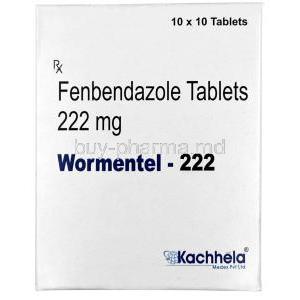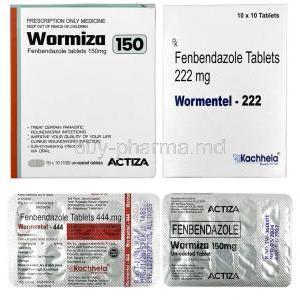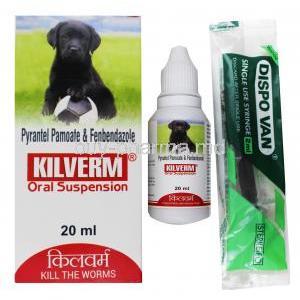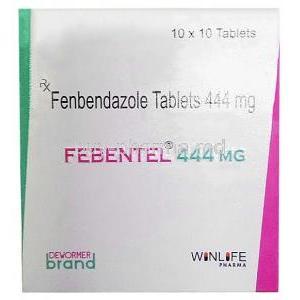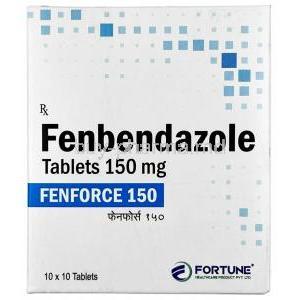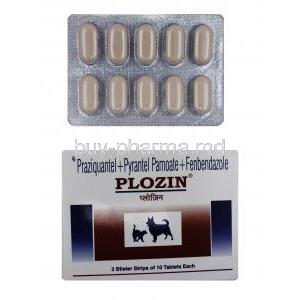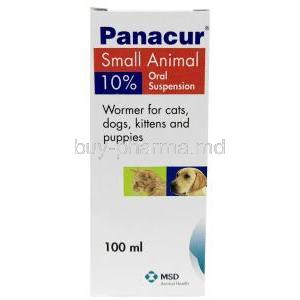Introduction to Baycox Piglet Coccidiocide
Overview of Baycox: What It Is and Why It's Used in Piglets
Baycox Piglet Coccidiocide is a potent veterinary pharmaceutical specifically designed to combat coccidiosis in neonatal swine. This condition, caused by *Isospora suis*, is a common and economically detrimental parasitic infection in piglets. Baycox is formulated to prevent the onset of clinical symptoms and improve survivability during the most vulnerable early stages of life.
Importance of Early Coccidiosis Prevention in Swine Production
Coccidiosis poses a major threat in intensive pig farming. Left untreated, it can lead to:
- Watery to pasty diarrhea
- Failure to thrive and poor weight gain
- Increased susceptibility to secondary infections
Early intervention with Baycox can prevent these complications, preserving herd health and optimizing productivity.
Regulatory Classification and Veterinary Approval Status
Baycox Piglet is classified as a prescription-only veterinary medicine in most regions. It is approved by regulatory bodies such as the European Medicines Agency (EMA) and authorized for use under veterinary supervision to ensure safe and effective administration.
Active Composition and Formulation Details
Active Ingredient: Toltrazuril – Concentration and Chemical Structure
The active compound in Baycox is Toltrazuril, a triazinone derivative known for its broad-spectrum anticoccidial properties. It is present at a concentration of 50 mg/mL, delivering targeted action against coccidial parasites.
Inactive Components and Formulation Type (Oral Suspension)
Baycox is an aqueous-based oral suspension. It contains non-active excipients that ensure:
- Stable dispersion of the active ingredient
- Palatable taste for ease of administration
- Proper bioavailability post-ingestion
Packaging Sizes Available for Commercial Use
Baycox Piglet is available in multiple packaging configurations, including 100 mL, 250 mL, and 1 L bottles. These sizes are tailored for use in both small-scale operations and industrial farming environments.
Mechanism of Action: How Baycox Works Against Coccidiosis
Inhibition of Intracellular Parasite Development (*Isospora suis*)
Toltrazuril targets intracellular stages of *Isospora suis*, disrupting nuclear division and oocyst development. This intervention halts the reproductive cycle of the parasite before clinical disease manifests.
Selective Targeting of Protozoan Mitochondrial Function
The compound specifically impairs mitochondrial respiration in protozoa, leading to energy depletion and death of the parasitic cells without significantly affecting host tissue.
Spectrum of Anticoccidial Activity in Neonatal Piglets
Baycox exhibits a high degree of efficacy against *Isospora suis*, the primary coccidian species in piglets. Its activity spans across both asexual and sexual stages of the parasite lifecycle.
Indications and Approved Uses of Baycox for Piglets
Prevention of Clinical Coccidiosis in Pre-Weaned Piglets
Baycox is indicated for the prevention of coccidiosis in piglets aged 3–5 days. A single oral dose ensures control of oocyst shedding and protects piglets during the critical early weeks.
Reduction in Diarrhea and Associated Weight Loss
Clinical studies show that piglets treated with Baycox experience significantly less diarrhea, reduced intestinal damage, and improved daily weight gain.
Enhancement of Growth Performance in Early Stages
By minimizing enteric disease, Baycox indirectly promotes improved growth metrics and uniformity within the litter, leading to better market readiness.
Off-Label and Investigational Uses in Swine and Other Species
Use in Older Piglets and Fattening Pigs
Though not officially approved for older swine, veterinarians may consider off-label use for:
- Post-weaning pigs in high-risk environments
- Management of sporadic coccidiosis outbreaks
Off-label Administration in Other Livestock (e.g., lambs, calves, poultry)
Baycox’s active ingredient has demonstrated efficacy in other species such as:
- Lambs with *Eimeria* infections
- Calves with protozoan enteritis
- Poultry under specific veterinary direction
Research-Based Experimental Applications for Mixed Parasite Infections
Experimental data suggest potential benefits of Toltrazuril in mixed parasitic infections, particularly when used in conjunction with antibiotics or antiparasitic protocols.
Dosage Guidelines and Proper Administration Techniques
Recommended Dose per Body Weight and Timing of Administration
Baycox should be administered as a single oral dose of 20 mg/kg body weight. The optimal time for administration is on day 3 to 5 of life, before the appearance of clinical symptoms.
Oral Drenching Method: Equipment, Restraint, and Technique
A dosing syringe or calibrated drench gun should be used. Piglets must be gently restrained and the suspension administered slowly into the mouth to ensure swallowing.
Single-Dose Treatment Schedule: Timing Post-Birth
A one-time administration early in life is typically sufficient to prevent disease. No follow-up treatment is usually required if administered correctly.
Missed Dose Protocol and Repeat Administration Considerations
If a dose is missed, administer as soon as possible. Re-treatment is not typically needed unless reinfection is suspected or herd outbreak conditions persist.
Side Effects and Adverse Reactions in Piglets
Overview of Known Reactions Post-Treatment
Baycox is generally well tolerated. Most piglets show no adverse signs after treatment. However, as with all pharmaceuticals, monitoring is essential.
Common Side Effects: Temporary Diarrhea, Lethargy, Mild GI Upset
Some animals may display mild, transient symptoms such as:
- Loose stools
- Brief fatigue
- Minimal feed refusal
Rare or Serious Adverse Reactions: Hypersensitivity, Respiratory Distress
Though extremely rare, hypersensitivity reactions may include:
- Labored breathing
- Swelling of the face or limbs
- Shock-like symptoms
Management of Side Effects and When to Seek Veterinary Assistance
In case of unusual symptoms or persistent diarrhea, consult a licensed veterinarian immediately. Supportive therapy and fluid replacement may be warranted.
Interaction with Other Drugs, Vaccines, and Supplements
Potential Drug-Drug Interactions in Piglet Therapeutic Protocols
Baycox has minimal known drug interactions. However, caution is advised when combining with:
- Immunomodulators
- Other antiparasitics
- NSAIDs
Compatibility with Iron Injections, Antibiotics, and Oral Nutrients
Baycox can be administered alongside iron dextran, oral rehydration salts, and antimicrobial therapies without known interference.
Impact on Efficacy When Used with Concurrent Antiparasitic Agents
While synergistic effects are possible, unnecessary use of additional anticoccidials may increase resistance risk. A targeted strategy is recommended.
Contraindications and Cases Where Baycox Should Not Be Used
Hypersensitivity to Toltrazuril or Any Inactive Component
Do not administer to piglets with known allergies to Toltrazuril or its formulation. Conduct preliminary sensitivity assessments in high-risk herds.
Not for Use in Severely Dehydrated or Debilitated Piglets
Administration should be delayed in piglets displaying severe weakness or dehydration. Stabilization with fluids and supportive care is advised prior to treatment.
Caution in Farms with Known Toltrazuril Resistance
Prophylactic misuse may lead to decreased efficacy. Use Baycox as part of a comprehensive herd health strategy, with periodic efficacy reassessment.
Warnings and Veterinary Precautions Before Use
Withdrawal Periods for Meat-Producing Animals
Baycox Piglet Coccidiocide requires strict adherence to withdrawal periods to ensure meat safety. A minimum of 77 days must elapse between treatment and slaughter to avoid detectable residues of Toltrazuril in muscle tissue. Regulatory compliance with withdrawal intervals is critical for public health and export certification.
Importance of Accurate Body Weight Measurement
Precise dosing is essential to ensure efficacy and safety. Underdosing may result in subtherapeutic exposure and resistance development, while overdosing increases the risk of toxicity. Weighing piglets individually or using calibrated average weights per litter is strongly recommended before administration.
Environmental and Biosecurity Considerations During Administration
Baycox should be administered in a controlled, clean environment to reduce the risk of reinfection or cross-contamination. Implement the following best practices:
- Disinfect pens and farrowing crates prior to administration
- Separate treated and untreated animals when feasible
- Limit foot traffic during treatment to prevent environmental contamination
Careful Administration in Specific Situations
Caution in Piglets with Gastrointestinal Disorders
Piglets experiencing severe diarrhea, vomiting, or gastrointestinal stasis may not absorb oral medications effectively. Delay treatment until hydration and gut function are stabilized. In such cases, supportive care should precede Baycox administration.
Avoidance of Overuse to Prevent Drug Resistance Development
Routine, indiscriminate use of Toltrazuril may foster resistant strains of *Isospora suis*. Avoid repeated dosing within the same production cycle and integrate with rotational or integrated parasite control protocols when necessary.
Monitoring Response to Treatment in Multi-parity Litters
Variability in immune maturity among litters of different parity sows can affect treatment outcomes. Observe post-treatment piglets for uniform improvement in fecal consistency, weight gain, and vitality. Record any cases of persistent diarrhea or non-responders for further veterinary evaluation.
Special Considerations in Unique Populations
Use in Pregnant Sows and Lactating Dams (Indirect Exposure)
While Baycox is not administered directly to sows, indirect exposure may occur through contact or excretions. There is no evidence of teratogenicity, but it is prudent to maintain spatial and procedural separation between sows and recently treated piglets.
Considerations for Future Breeding Stock and Genetic Lines
No long-term reproductive or genetic toxicity has been observed with Toltrazuril. However, when treating replacement gilts or high-value breeding lines, monitor for any signs of altered development, reproductive performance, or immune sensitivity.
Not Intended for Human Consumption – Strict Veterinary Use
Baycox is strictly contraindicated for human use. Accidental ingestion or misuse may result in serious health consequences. Only trained personnel should handle and administer the product, in accordance with national veterinary pharmaceutical regulations.
Overdose Risks and Emergency Response
Signs of Overdose in Piglets: Neurological and Gastrointestinal Symptoms
Overdosing may lead to:
- Ataxia or uncoordinated movements
- Tremors or hypersensitivity to touch
- Profuse diarrhea and dehydration
- Appetite suppression
Such symptoms require immediate attention and cessation of treatment.
Immediate Steps in Case of Accidental Overdose
If overdose is suspected:
- Isolate the affected animal(s)
- Provide hydration support via oral or subcutaneous fluids
- Consult a veterinarian for diagnostic evaluation
Recommended Veterinary Interventions and Supportive Care
There is no specific antidote for Toltrazuril toxicity. Management is supportive:
- Electrolyte and fluid therapy
- Nutritional support and GI protectants
- Close monitoring of vital signs and neurological function
Handling Precautions and Safety Guidelines for Farm Workers
Personal Protective Equipment (PPE) During Administration
Farm workers must wear:
- Protective gloves (nitrile or latex)
- Safety goggles to prevent splash contact
- Protective clothing or aprons
Avoid ingestion, inhalation, and skin contact with the product.
Proper Hygiene and Handwashing Protocols
Wash hands thoroughly with soap and water after each use. Avoid eating, drinking, or smoking while handling Baycox. If accidental contact occurs, flush the affected area with water and seek medical advice if irritation persists.
Disposal Instructions for Syringes, Bottles, and Unused Product
Used syringes and bottles should be disposed of in accordance with local environmental regulations. Never pour unused product down drains or into soil. Return expired or unused material to a licensed veterinary waste handler.
Storage Conditions and Shelf-Life Maintenance
Ideal Storage Temperature and Light Protection Requirements
Store Baycox at temperatures between 15°C and 30°C (59°F to 86°F). Protect from direct sunlight and extreme humidity. Do not refrigerate or freeze, as this may affect the stability of the suspension.
Shelf-Life After First Opening the Bottle
Once opened, Baycox should be used within three months. Mark the date of first opening clearly on the container. Shake well before each use to ensure uniform distribution of the active ingredient.
Precautions to Avoid Contamination or Freezing
Keep the bottle tightly closed when not in use. Use only clean, dry dosing equipment to avoid microbial contamination. Do not use if the solution changes color, consistency, or develops visible particulates.


